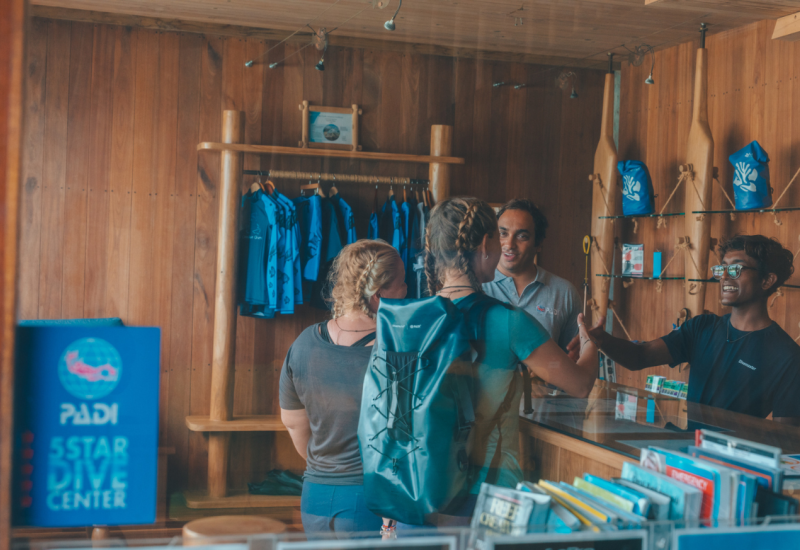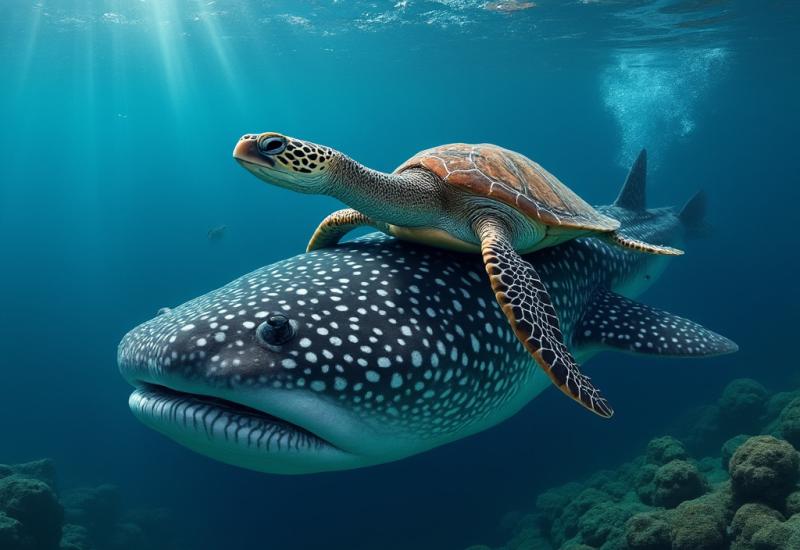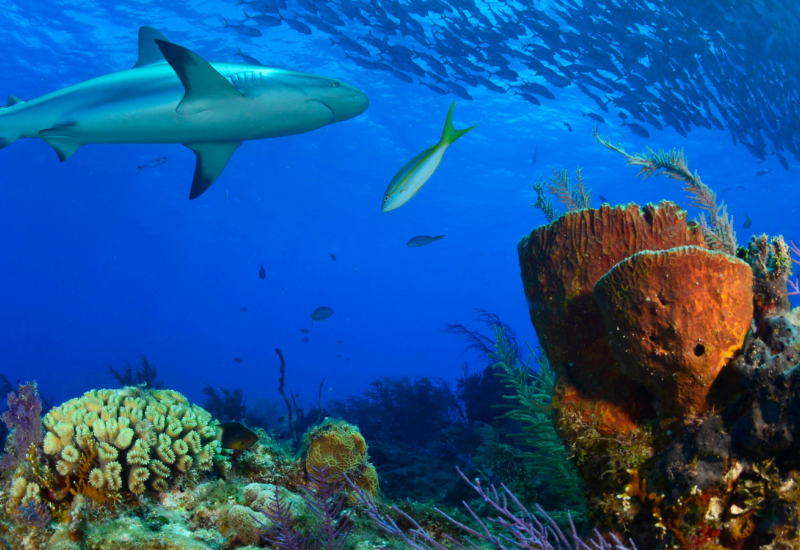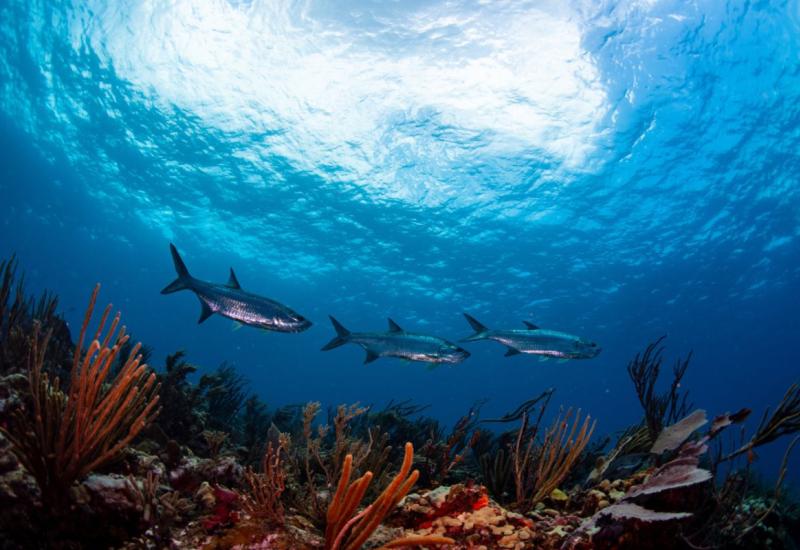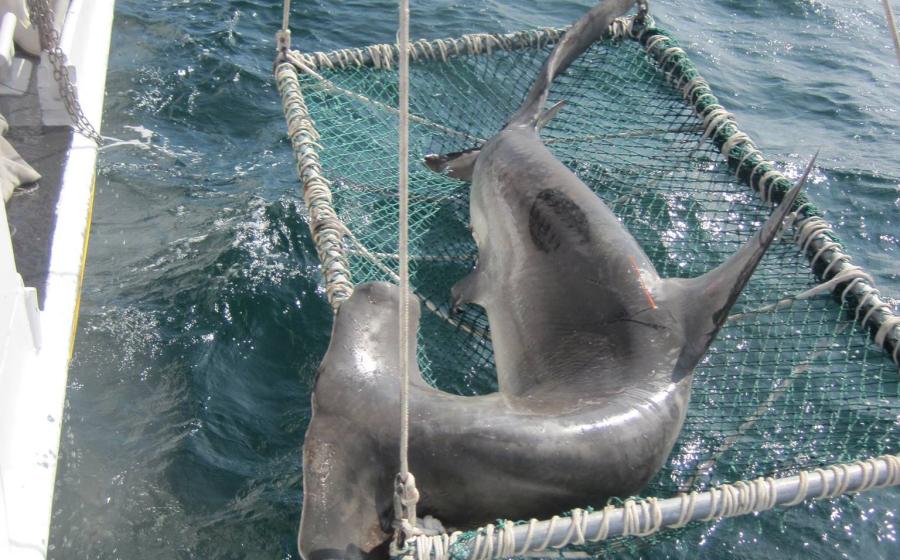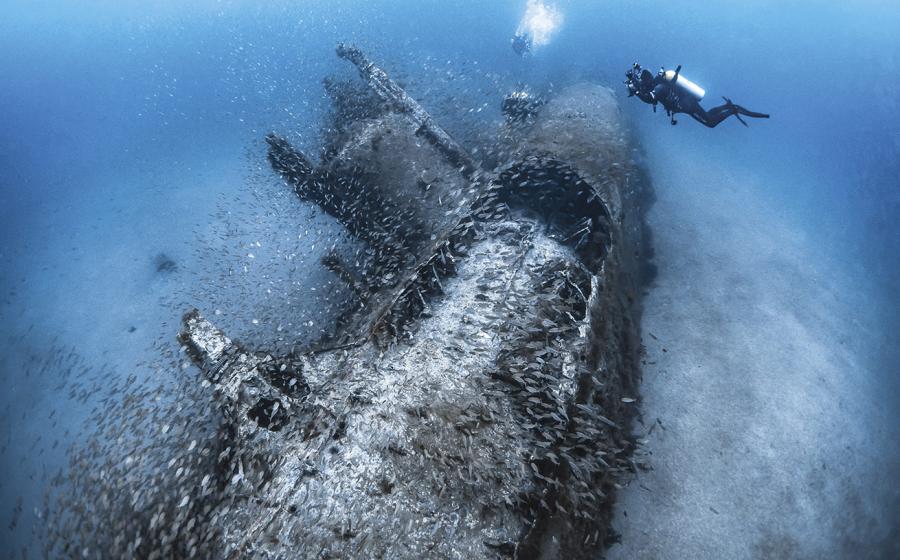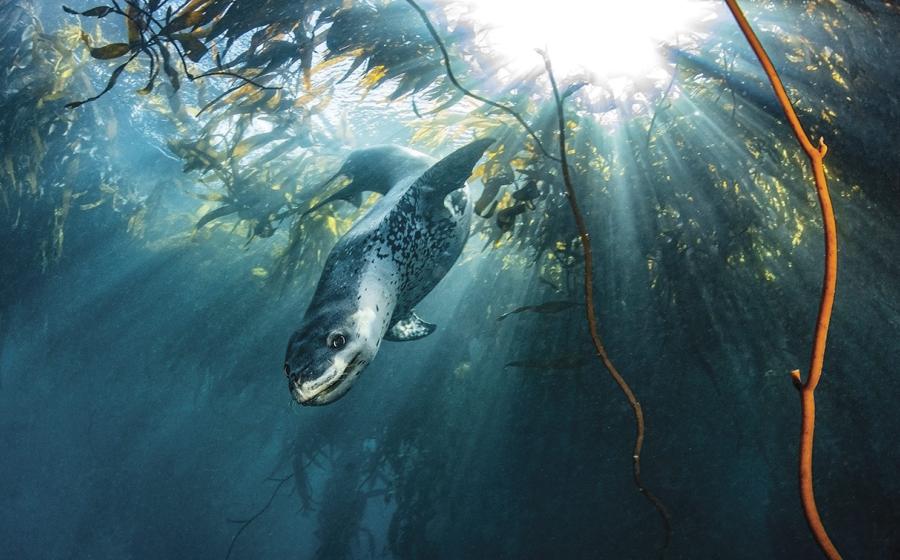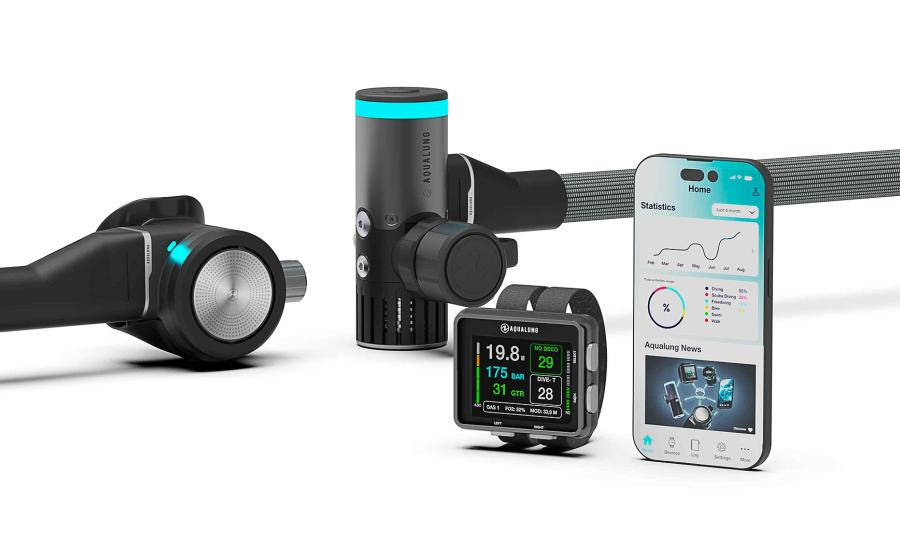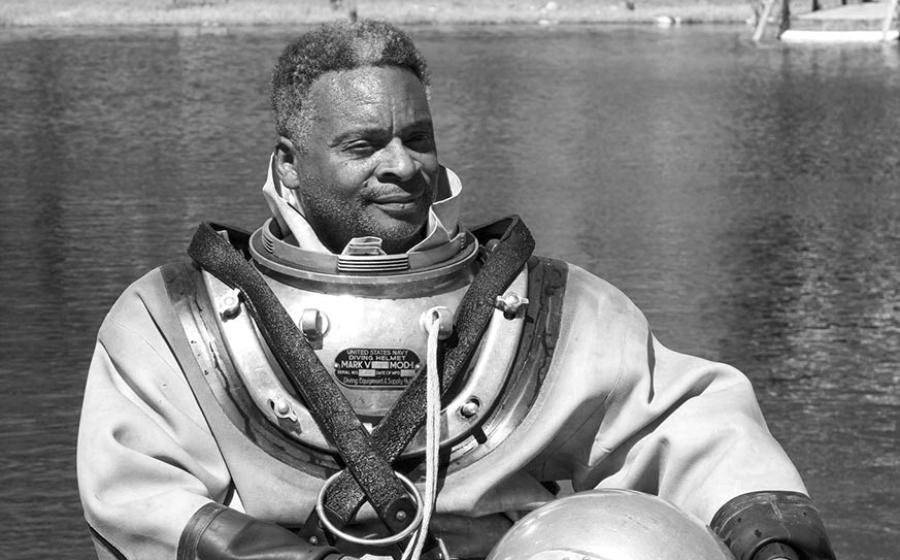What It's Like To Go Scuba Diving On The Raja Ampat Aggressor Liveaboard
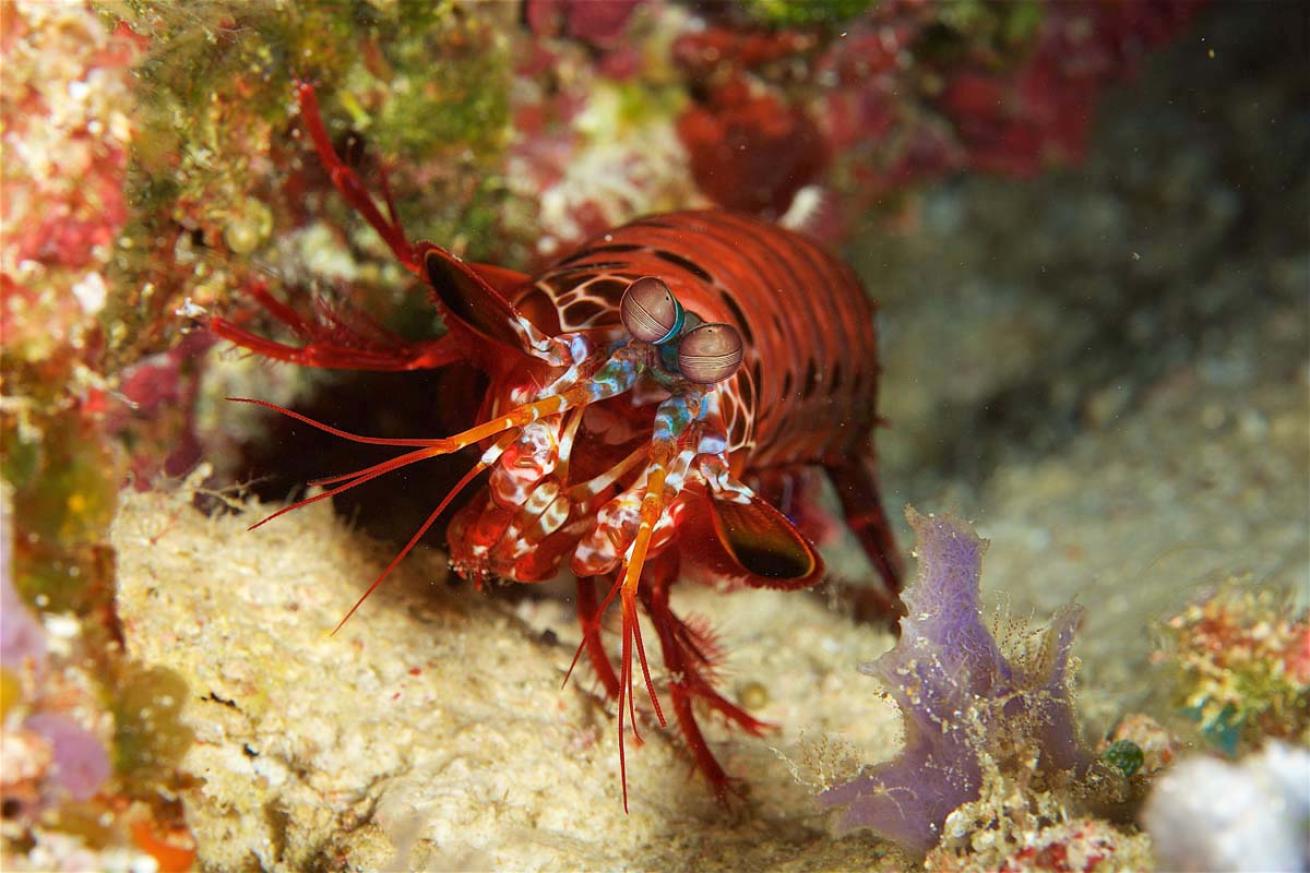
Wayne Brown/Courtesy AggressorMantis shrimp are among the fascinating creatures found on Raja Ampat dive sites.
Raja Ampat, or the Four Kings, is an archipelago composed of more than 1,500 small islands, cays, and shoals surrounding the four main islands of Misool, Salawati, Batanta, and Waigeo. The Raja Ampat archipelago is the part of the Coral Triangle that contains the richest marine biodiversity on Earth. Our starting point was Sorong, a city of more than 200,000 people located off the northwest tip of the island of New Guinea.
Sorong has long been a logistics hub for Indonesia’s thriving oil and gas industry but is quickly becoming a scuba diver’s hangout with excellent hotels and restaurants and a new airport slated to open this year. Flights from Bali or Jakarta connect in either the larger cities of Makassar and Manado or a couple of smaller cities so you have several options getting there.
Our home for the 10-day charter is the Raja Ampat Aggressor. It is a steel 100-foot purpose-built liveaboard that accommodates 16 guests and 13 staff members. There are no docks large enough to handle the Aggressor so guests enjoy a short ride out in the yacht’s tenders from a small jetty in the center of town.
On arrival we were greeted by the friendly Indonesian staff and Michal, our cruise director, an expat from Poland who has been in Indonesia for the past eight years. After we get settled in our cabins and our gear set up and checked, we enjoy welcome drinks and a lunch buffet before Michal presents his safety and charter briefing. Once everyone is up to speed on how we will spend our next 10 days, our captain motors out of the harbor and on to our first dive site where we will be arriving early tomorrow morning.
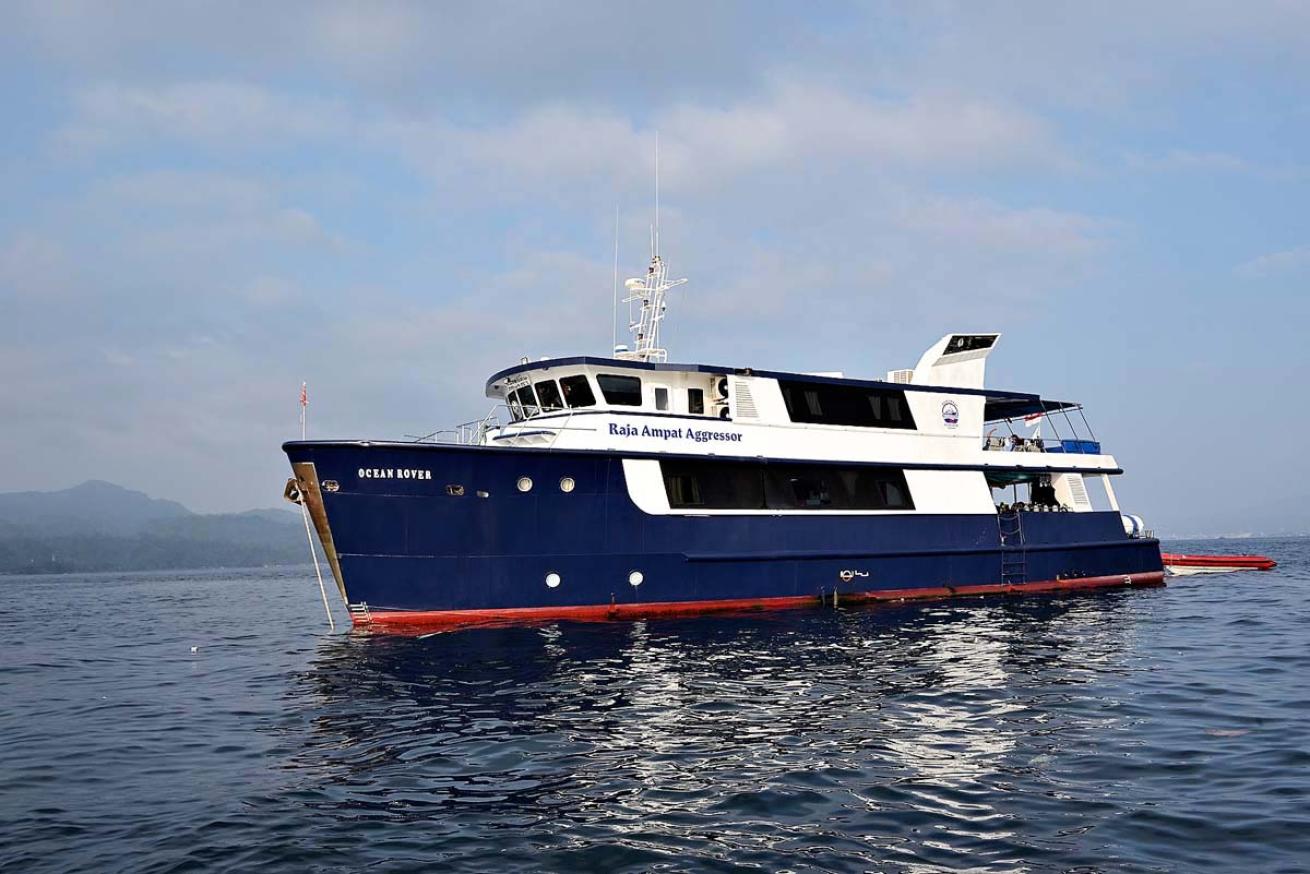
Courtesy AggressorA view of the Raja Ampat Aggressor
The diving is as diverse as advertised. During our charter, we are told that we will see the cutest pygmy seahorses on most sites, plenty of colorful nudibranchs, anemonefish, cuttlefish, mobula rays, sharks and mantas. Yes, we saw everything on everyone’s Raja Ampat bucket list and then some!
Our Indonesian dive guides Herry and Jemy were uncanny in how they could spot and find the most unusual critters hiding in the most unusual places on every dive. Both have been around a long time and know the sites and what is to be found there with ease. Our dive sites were very diverse ranging from fully submerged seamounts to small islands that spread out below the surface like giant icebergs to piers and bays.
Each dive offered a unique experience where some species of fish and critters are more likely to be found like the walking shark, the blue-ringed octopus or the graceful manta.
Our dives started out in the central Raja Ampat area in the Dampier Strait at sites like Friwinbonda and Blue Magic. We spent four days here visiting more dive sites off the islands of Kri, Mansour and Arborek. At dive site Cape Kri, we entered in the morning on a rising tide with a little current (which is always necessary for good action). Not only did we have large schools of chevron barracuda, surgeonfish and oriental sweetlips but also the largest school of huge humphead parrotfish I have ever encountered!
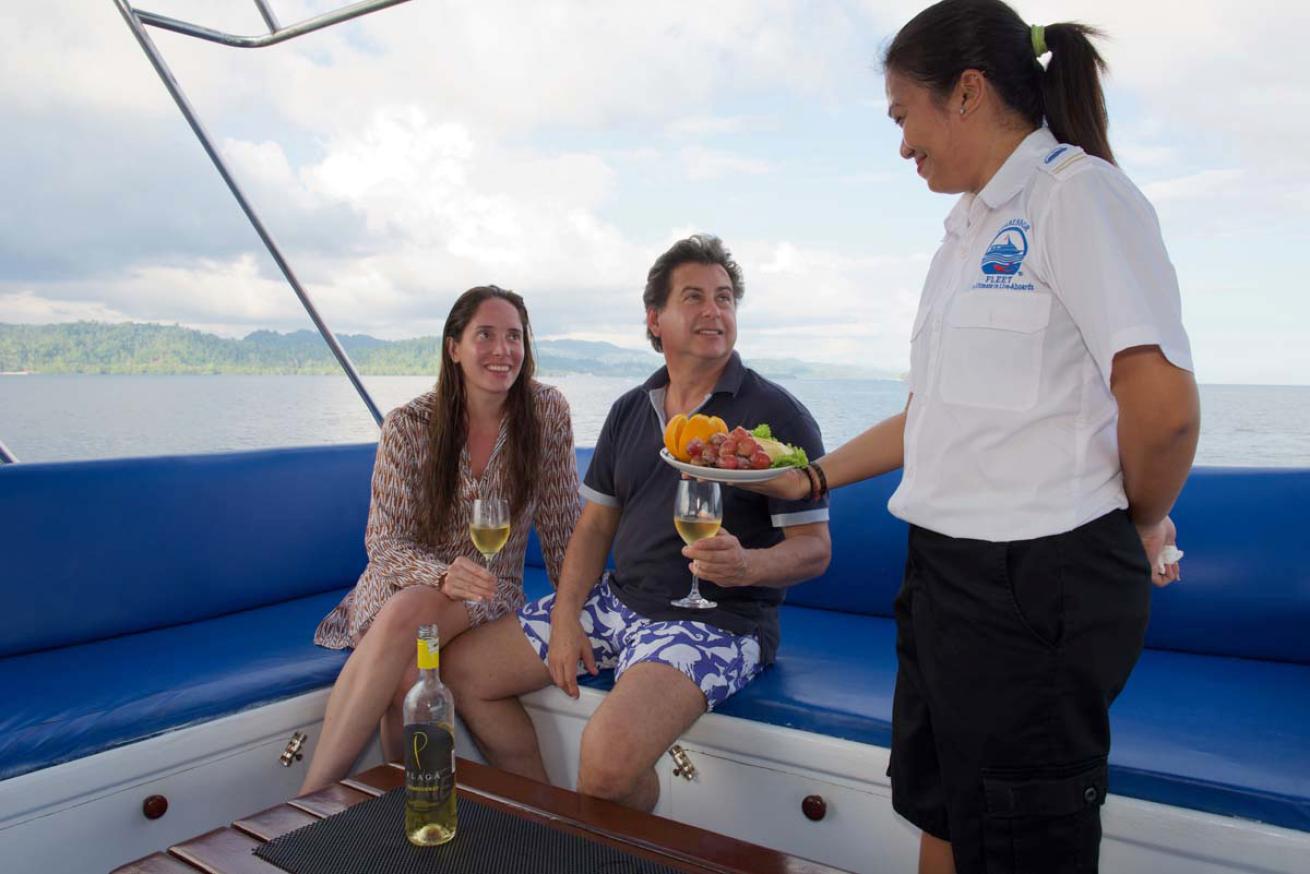
Wayne Brown/Courtesy AggressorCruise to some of the world's best dive sites in style on the Raja Ampat Aggressor
We then made the 14-hour crossing overnight to the southern Raja Ampat area diving the islands of Balbullol, Wayil Batan and Misool. This area is known for it’s amazing colorful soft corals adding to the prolific underwater life. Nudi Rock is one of the most famous dive sites in Misool with beautiful coral reefs and hundreds of different corals. We spotted a walking shark as well as denise and bargibanti pygmy seahorses. We were constantly amazed at the number of different coral formations and their bright incredible colors.
We finished off our diving at Boo island. Gus Ridge, a deep narrow ridge with a beautiful coral reef on top, was a great way to start out our day. At the very beginning of the dive we had a very big marble ray lying on the bottom that was not intimidated by the divers and let everyone get a photo as we passed by. Two large mantas swam along the wall getting everyone’s attention. We also encountered a school of tuna, giant trevallies and napoleon wrasse. At the end of the dive, a guest even spotted a big marlin moving quickly near the surface.
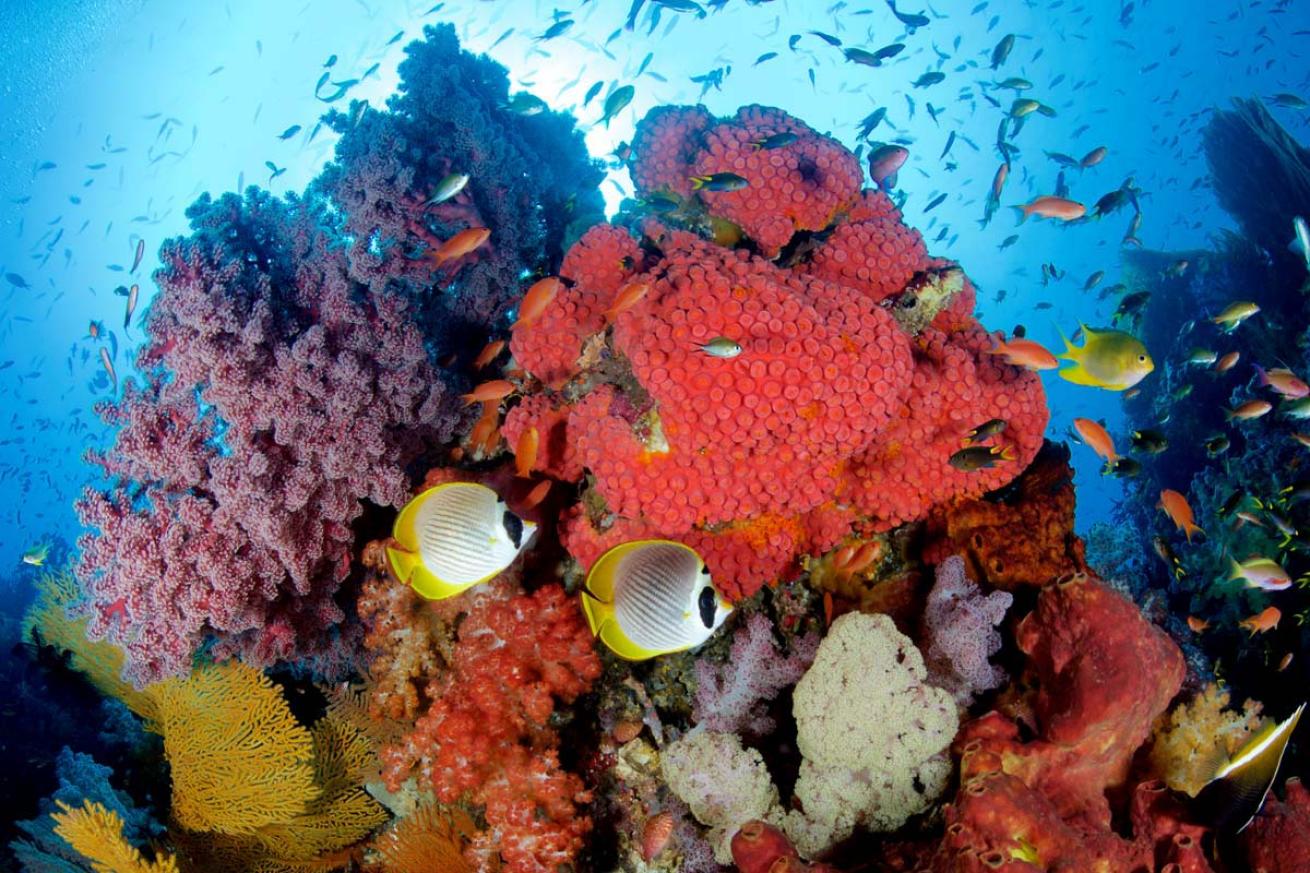
Wayne Brown/Courtesy AggressorPanda butterflyfish swim in front of vibrant corals in Raja Ampat
By the end of the charter, I had photographed the elusive blue-ringed octopus, the incredibly shy marble shrimp, a sea fan covered in tiny skeleton shrimp and the small bobtail squid.
Our weather was an amazing blend of partly cloudy 88-degree days, mirror-flat seas and 82-85 degree F water. It was 10 days of some of the most perfect dive charter weather I have encountered.
A lot of photographers ask me about what equipment I use. Currently I have a Nikon D810 in an Aquatica housing and two Sea & Sea YS250 strobes. I use the CM Diffusers on my strobes from AquaTerra Imagery for the perfect lighting in all occasions. For lenses, I alternate between a Sigma 15mm Fisheye, a Nikkor 40mm Macro (my personal favorite) and a Sigma 150mm Macro. This is all balanced with float arms from Ultra Light Control Systems. For night photography, I also have a Light & Motion Sola Photo 1200 mounted on top of my housing which includes both a white and red LED mode. The red light allows the camera to focus without disturbing the critter you are wanting to capture. A must have for those skittish shrimp and other shy animals.
As we made the 15-hour ride back to Sorong, everyone was immersed in deciding which pictures were their favorites and which dives sites they want to remember for their next visit here.
The Raja Ampat Aggressor offers four itineraries throughout the year including Raja Ampat, Ambon, Triton Bay and Cenderawasih Bay (where you encounter multiple whale sharks filter feeding on the krill surrounding the local fishing boats) so there are just a few of the excuses we need to head back!
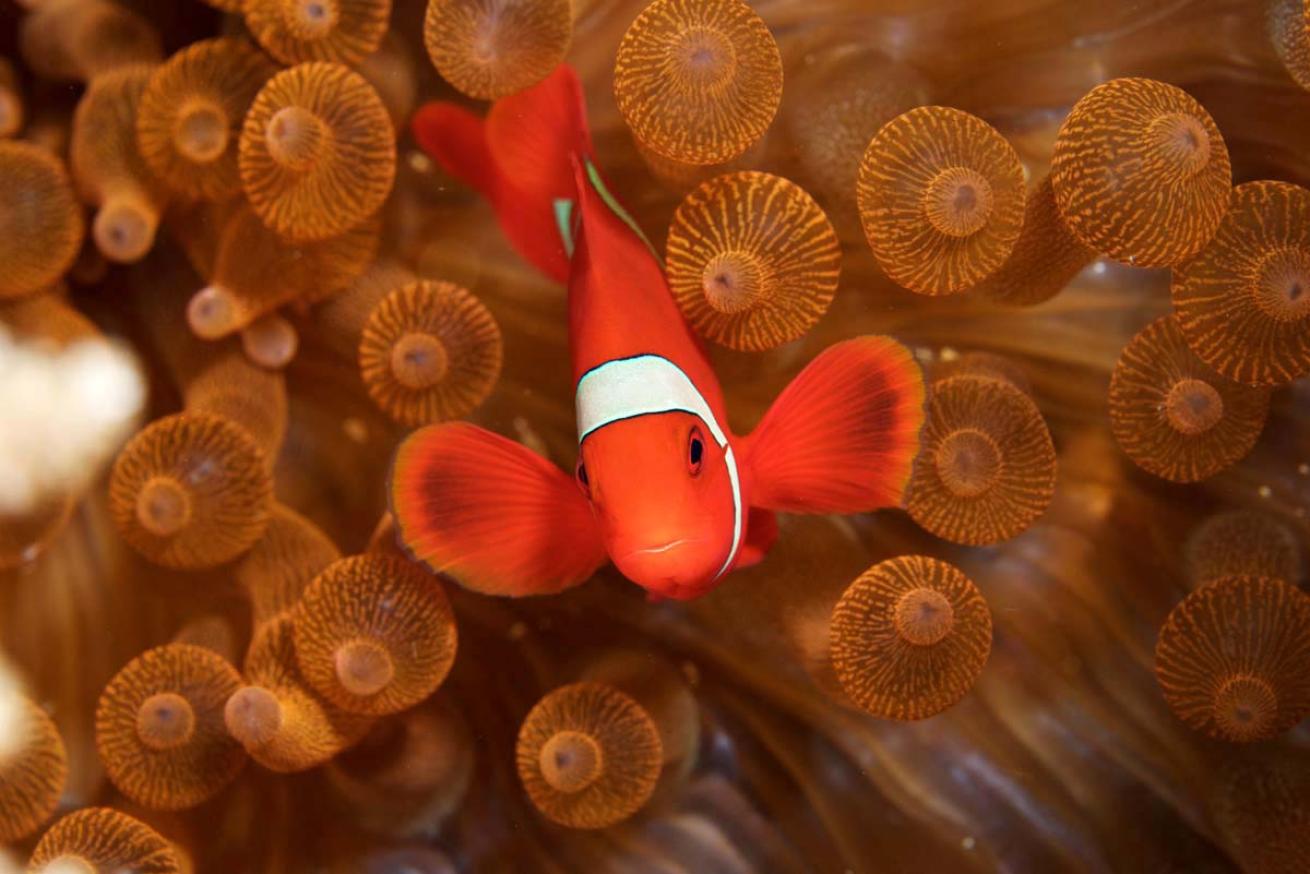
Wayne Brown/Courtesy AggressorA spinecheek anemonefish in Raja Ampat
WHAT TO LOOK FOR IN RAJA
The Blue-Ringed octopus is extremely small at 5 to 8 inches and relatively docile nature and identified by the 50-80 blue and black rings that cover its body. However, if provoked and handled, its venom is powerful enough to kill humans.
The mutually beneficial symbiosis between gobies and nearly blind snapping shrimp is one of the many that occur in our marine environment. The shrimp build and maintain a burrow that both animals live in, and the goby protects them both from predators. The goby keeps an eye out for predators and warns the shrimp with a flick of the tail if there is a potential predator nearby. They both retreat into the safety of the burrow.
Denise's pygmy seahorse is one of the smallest seahorses known. At maturity, it is less than 1 inch tall! Denise’s pygmy has a short snout, and a very slender body. It ranges in color from yellow to orange with small dark spots.
The juvenile barramundi is a frenetic wiggler that will amaze you every time you spot one. They are usually found in shallow reefs and partially hidden by structures and overhangs.
Humans possess three types of color-receptive cones in their eyes. Mantis shrimp have 16 types of color-receptive cones making them one of the most advanced visual systems ever discovered.
Decorator crabs use materials from their environment to hide from predators. They stick mostly sedentary animals and plants to their bodies as camouflage.
Check out these awesome photos from the trip:
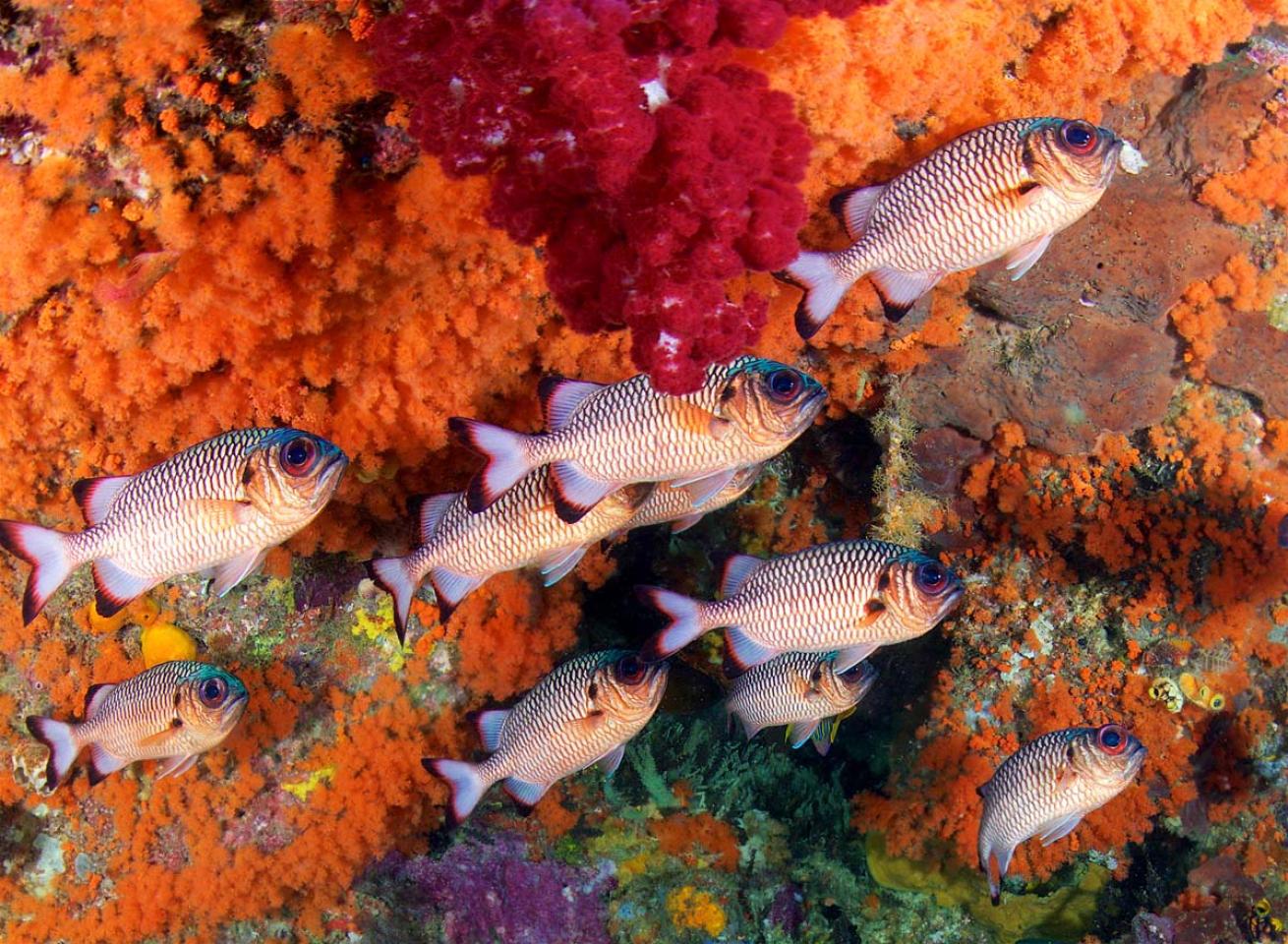
Wayne Brown/Courtesy AggressorShadowfin soldierfish in Raja Ampat
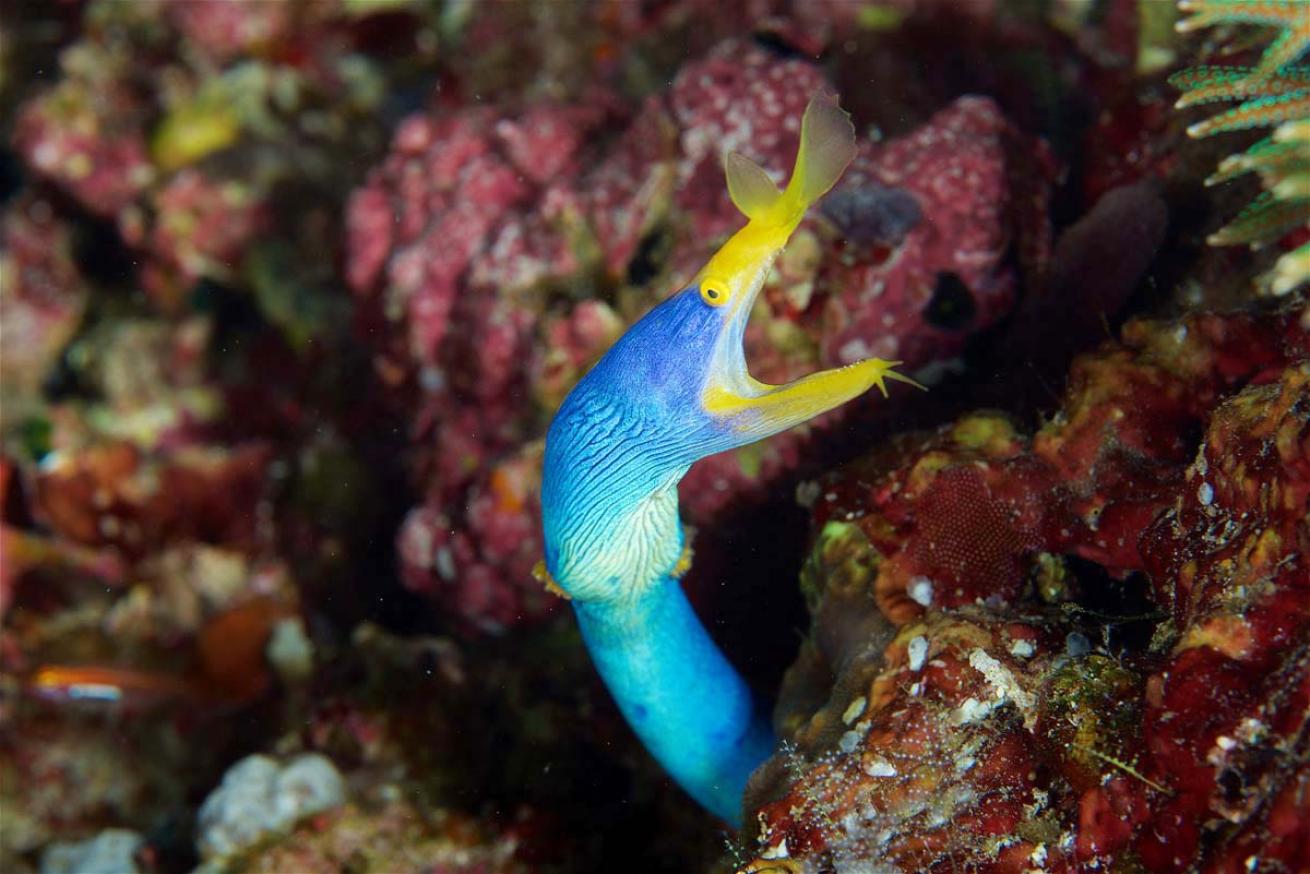
Wayne Brown/Courtesy AggressorA blue ribbon eel in Raja Ampat
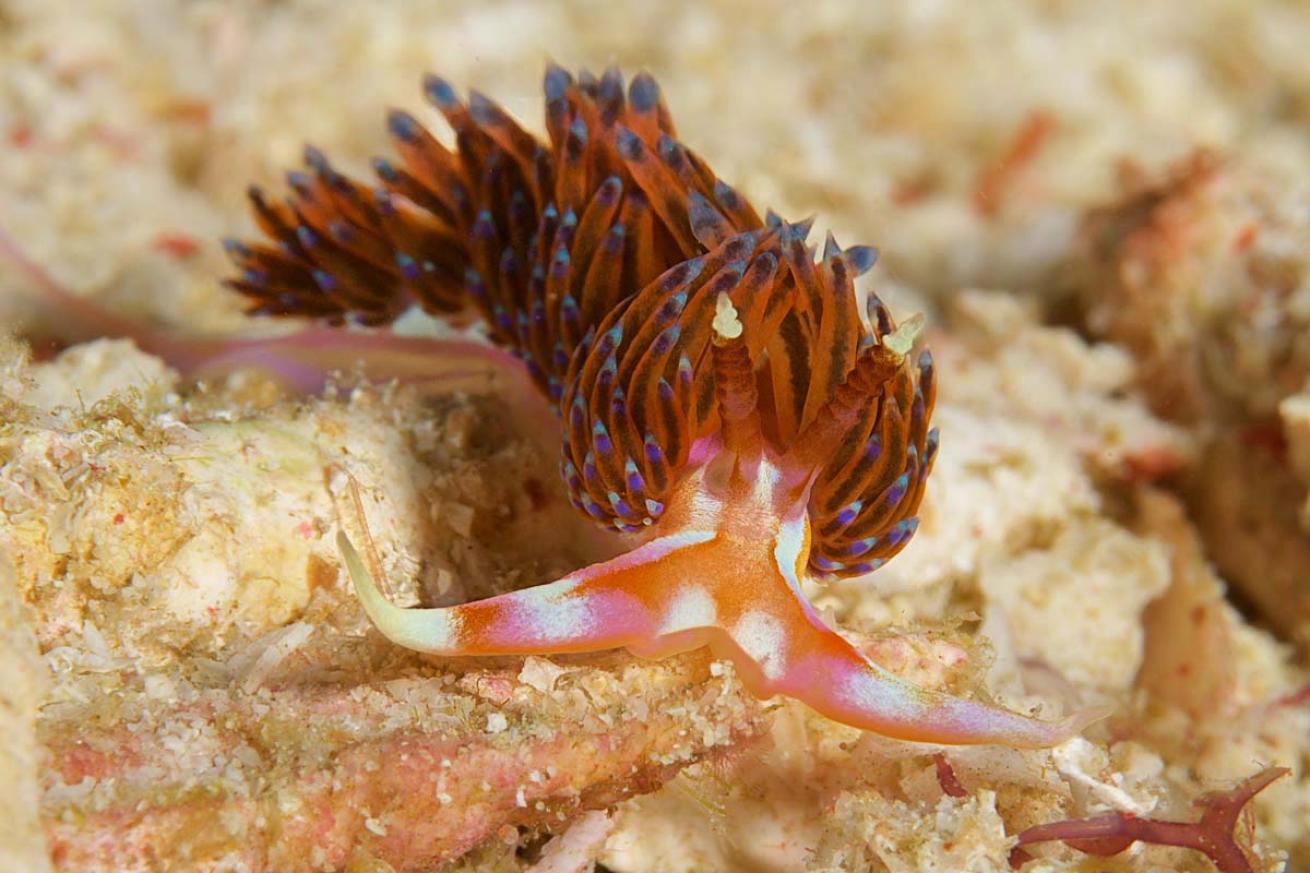
Wayne Brown/Courtesy AggressorRaja Ampat
Wayne Brown is the Chairman & CEO of Aggressor Fleet.
Aggressor Fleet Contact Information:
Email: [email protected]
Toll free: 800-348-2628
706-993-2531

